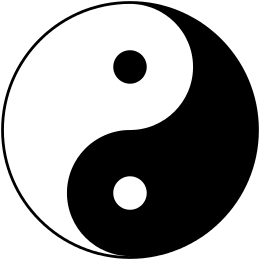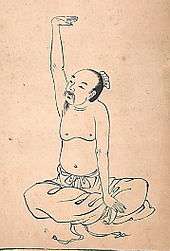Silk reeling

Silk reeling (pinyin chánsī, Wade-Giles ch'an² ssu1 纏絲) refers to a set of [[neigong]内功] (internal) movement principles expressed in traditional styles of [[t'ai chi ch'uan]太極拳], but especially emphasised by the Chen陳 and Wu styles. The name derives from the twisting and spiralling movements of the silkworm larva as it wraps itself in its cocoon, and to the metaphorical principle of "reeling the silk from a silk worm's cocoon". In order to draw out the silk successfully the action must be smooth and consistent without jerking or changing direction sharply. Too fast, the silk breaks, too slow, it sticks to itself and becomes tangled. Thus silk reeling movements are continuous, cyclic, spiralling patterns performed at constant speed with the "light touch" of drawing silk. Silk reeling is trained in solo forms and stances as well as in pushing hands with a partner.
As described by Wu Kung-tsao:
This resembles the strands of spun silk. Winding silk energy is applied in pushing hands when opponents probe, use locking maneuvers, neutralize, vie for control, and practice tactical movements around each other's space.There are six methods of winding silk energy: inner, outer, upper, lower, forward and backward. They are applied from anywhere on the body: the arms, legs, hips and waist, with the body moving continuously, with endless circularity, wrapped together like intertwined filaments of silk.
...
One who is skilled at winding silk energy is keenly sensitive and can accurately probe and stay with the opponent as he extends and contracts.[1]
Two complementary terms, Chán sī jīng (纏絲精) and Chán sī gōng (纏絲功) refer respectively to Silk-reeling energy and Silk-reeling force. These terms are often used in English interchangeably (and incorrectly). Chán sī jīng refers to the energy that is built up in the body through the practice of correct Taijiquan, while Chán sī gōng refers to the practical outward effect of that energy.
Chen-style silk reeling movements originate from the dantian and trace a taijitu pattern. Starting first with the outside circle and then adding the "tear shapes" (to quickly change direction while maintaining a smooth motion) while shifting the thrust from leg to leg; this motion in turn drives the rest of the joints of the body in a fluid, spiralling motion.

See also
References
External links
- Training in Chenstyle Taijiquan at the Wayback Machine (archived December 18, 2007). Chenstyle Taijiquan Web Resource - Chenstyle.com. Archive 2007-12-18.
- Chen "Silk Reeling" (ChanSiGong/ChanSiJing): Chen style Taichi Centre. Double Hand Silk Reeling article & video (by Malisa Ng, disciple Grandmaster Zhu Tian Cai) Retrieved 2009-08-30
- Photo Gallery at the Wayback Machine (archived August 23, 2007). Sydney Tai Chi and Qigong Centre. Pictures - Double Hand Silk Reeling (by Grandmaster Chen Xiaowang). Archive 2007-08-23.
- Silk Reeling. Michael Garofalo. Cloud Hands: Taijiquan and Qigong, March 8, 2008. Various Resources. Retrieved 2009-08-30.
